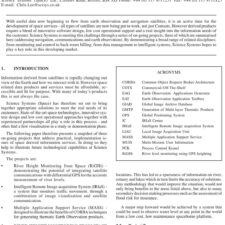Mission Concept and Development of the First Interstellar CubeSat Powered by Solar Sailing Technology
£5.00
Piotr Fil, Filip Szczebak, Debdut Sengupta, Ivan Revenga Riesco, Beatriz Soriano Tortosa, Bartosz Krawczyk, Gil Barbosa Ribeiro, Krzysztof Kwiatkowski, Matvey Boguslavskiy, Chang Liu, Junglin Sung (2023), JBIS, 76, pp.78-86
Refcode: 2023.76.078
DOI: https://doi.org/10.59332/jbis-076-03-0078
Project Svarog is a student-led initiative aiming to reach the heliopause using a solar sail. Orbital models have proven the feasibility of the mission given the mass-to-area ratio of about 9 grams per square meter of the sail for a satellite launched on a piggyback mission to Mars. Solar sailing increases the flexibility of missions to the outer Solar System, as unique planet alignment, which was crucial for gravity assists is no longer required. Long-term missions require a better understanding of thin membrane behaviour since buckling of sail material under solar radiation pressure might cause the spacecraft to tumble unpredictably. Reduced order model of membrane deflection is thus coupled with orbital simulation, resulting in the determination of the operation regime, for which the mission escapes the Solar System. Additionally, vacuum chamber experiments designed to investigate the effects of solar radiation pressure and heating on the transient and steady-state behaviour of the sail have been devised. The system is designed to be built as a 6U CubeSat, being one of the first missions to utilise small-scale platforms for deep space missions. Granted that the first mission is successful, the Svarog system could also serve as a low-cost testbed for new technologies and research opportunities in deep space.
Keywords: Satellite, Deep Space, CubeSat, Solar Sail, Orbital Mechanics, Structural Design





